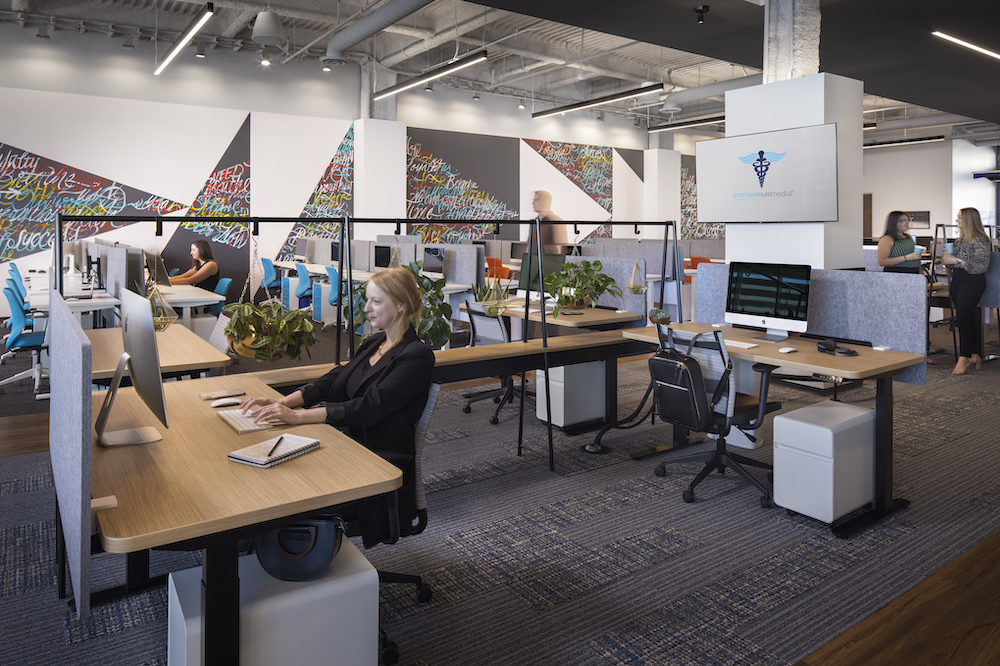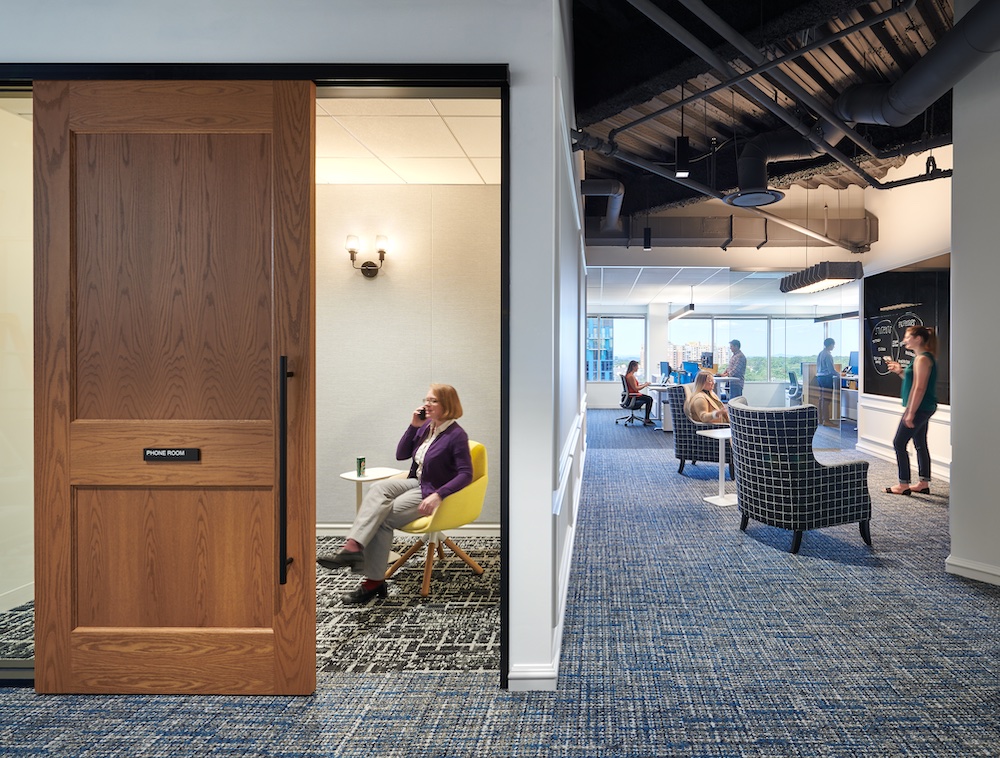Dennis Daisey and Amy Clark of SmithGroup explore how design that supports psychological safety can aid organizations in achieving their business objectives.

When people think of psychological safety, they tend to think about personal relationships and corporate culture. But the space where you work plays a big role, too. Imagine being sandwiched between two supervisors who can see your computer screen and every move. Now, imagine sitting across the room from your supervisors, you can make eye contact but maintain your personal space. Chances are, you’d feel distracted and exposed in the first configuration — and you’d feel more comfortable and able to focus in the second. That sense of safety is what you want in the design of your office.
During the pandemic, many employees became accustomed to working from the comforts of home, where they naturally have control over the space. As companies bring employees back to the office, incorporating psychological safety into workplace design can make the transition smoother. Done right, employees may even prefer to work in the office.
Ultimately, design that supports psychological safety can aid organizations in achieving their business objectives, particularly those related to their employees’ well-being and engagement.
What Is Psychological Safety?
Psychological safety in the workplace is the ability for individuals and teams to take risks and ask challenging questions without fear of ridicule or retaliation. Research shows when employees feel heard, seen and valued, they are more satisfied and productive.
Think about the high-functioning teams you know and ask yourself: Do they exhibit psychological safety? Chances are, they do.

How Psychological Safety Plays Out in Office Design
All buildings are essentially shelters. From the Stone Age to today, whether a wigwam or a WeWork, shelter kept the rain off our heads and protected us from animals that would eat us. According to Maslow’s Hierarchy of Needs, shelter ranks up there with food, water, clothing, and sleep as fundamental to survival. Shelter is intrinsically connected to a sense of safety.
Though we are far removed from the savannas where we evolved, our limbic systems haven’t received the memo. Our instincts and biopsychological responses to threats are as primitive as ever. So, we perceive modern threats to our sense of shelter — like being under your boss’ nose — as distressing. When our sense of shelter is threatened, the resulting stress can shut down our ability to think rationally.
How to Design Your Office for Psychological Safety
When designed properly, the workplace can create safe, secure places where employees feel empowered to thrive. Biophilic principles such as “prospect” and “refuge” help describe this relationship between space and psychology. Incorporating elements of choice and control into the design can enhance the overall experience and help make employees more comfortable.

Prospect: A Room (or Cubicle) With a View
Our ancestors needed dwellings with “prospect,” where they had unobstructed views to watch for threats. We need the same thing to feel safe at work. That means:
- Physical arrangements that allow for views to destinations, entrances and exits, and active areas.
- People should sit facing entrances.
- Computer monitors should be shielded from circulation zones.
- Workstation partitions no more than 42 inches tall to allow for views from a seated position, while still providing a sense of enclosure.

Refuge: Creating Spaces for Retreat
Our ancestors also needed dwellings that provided refuge, where they could get away from it all and feel protected.
- Workplace refuges include spaces that are distinct and calming but aren’t necessarily fully enclosed and private. These often emulate the feeling of being in a cave or sitting under a tree with shade and shelter provided.
- Quiet zones or libraries within an office offers employees opportunities to seek refuge.
- Workplaces with lactation and prayer rooms not only provide refuge but can convey to mothers and people of faith that their employer is sensitive to their needs.

Choice & Control
Workers are more comfortable when they have choice and control over their environment. It signals that their management trusts and supports them.
- Workers appreciate when they have a variety of environments to choose from to suit the tasks they’re working on or even their mood.
- Design features that allow for control include adjustable lighting, height adjustable desks, and features that allow workers to regulate their visual or auditory privacy.
If You Build It, They Will Come
After more than two years of the COVID-19 pandemic, employers are eager to have their workers back in the office. A psychologically safe workplace lets employees know that they are supported and they’re welcome back. The benefits of a psychologically safe workplace are clear: engaged, motivated and well-supported workers stay put and recruit their friends. It’s a win–win.

